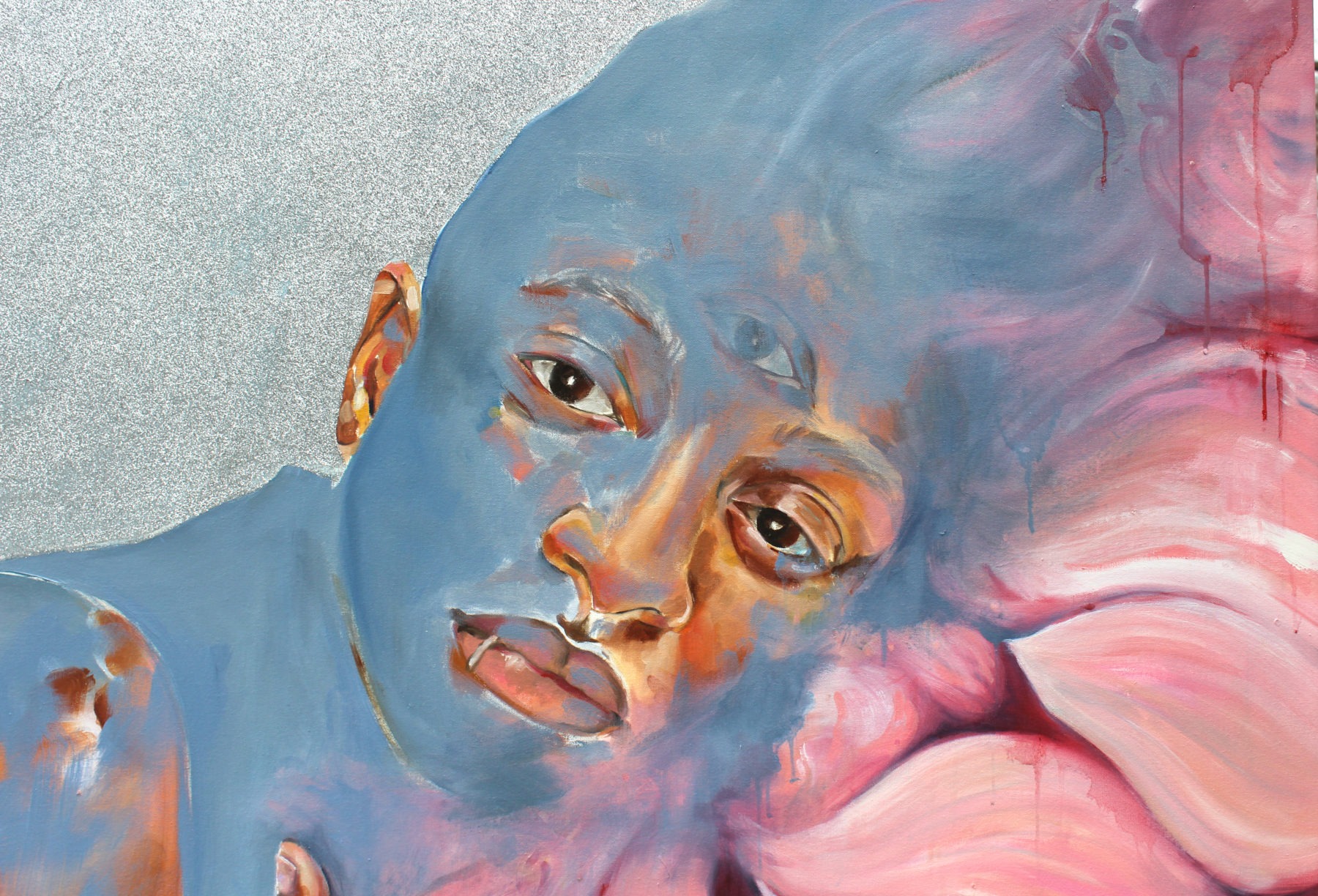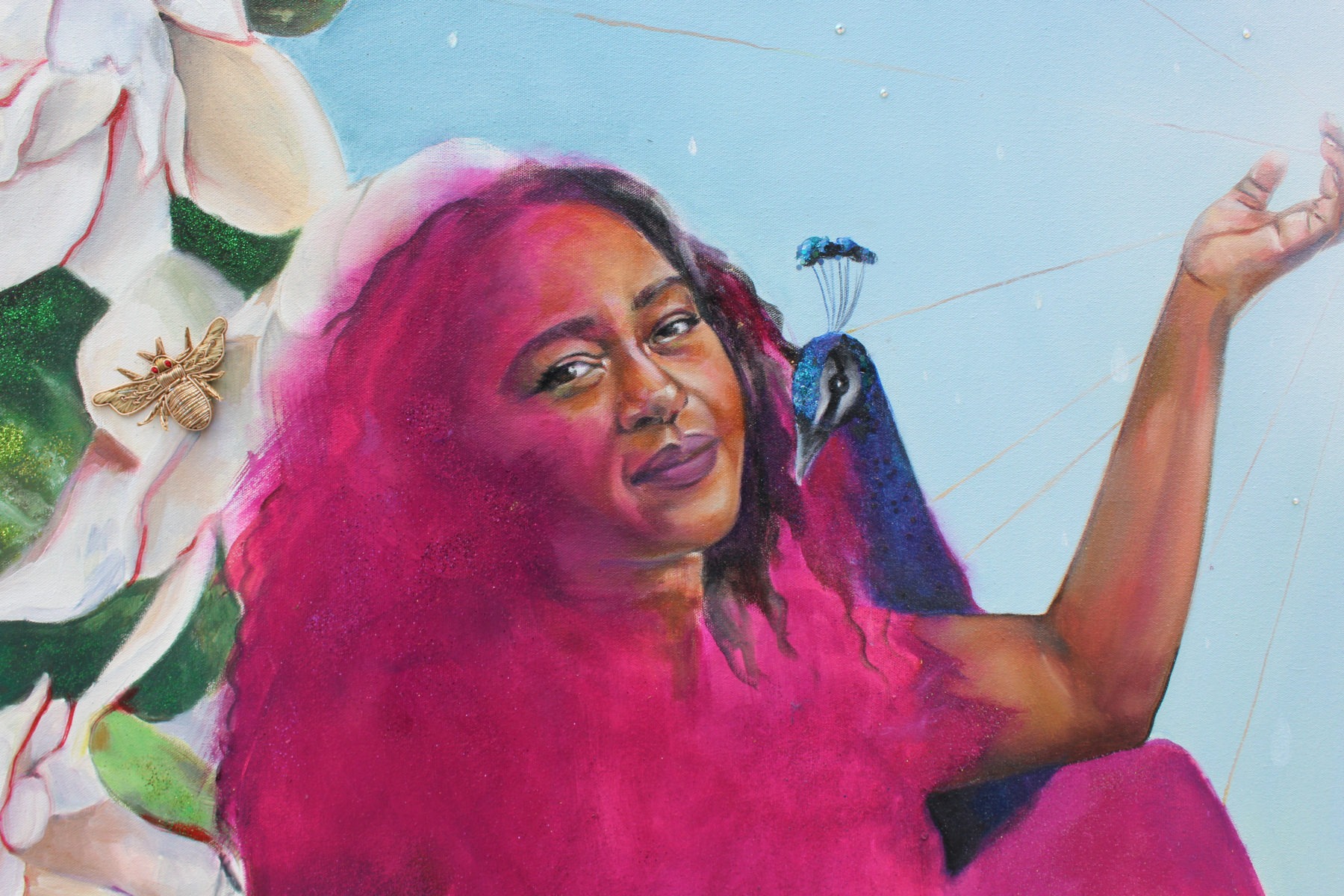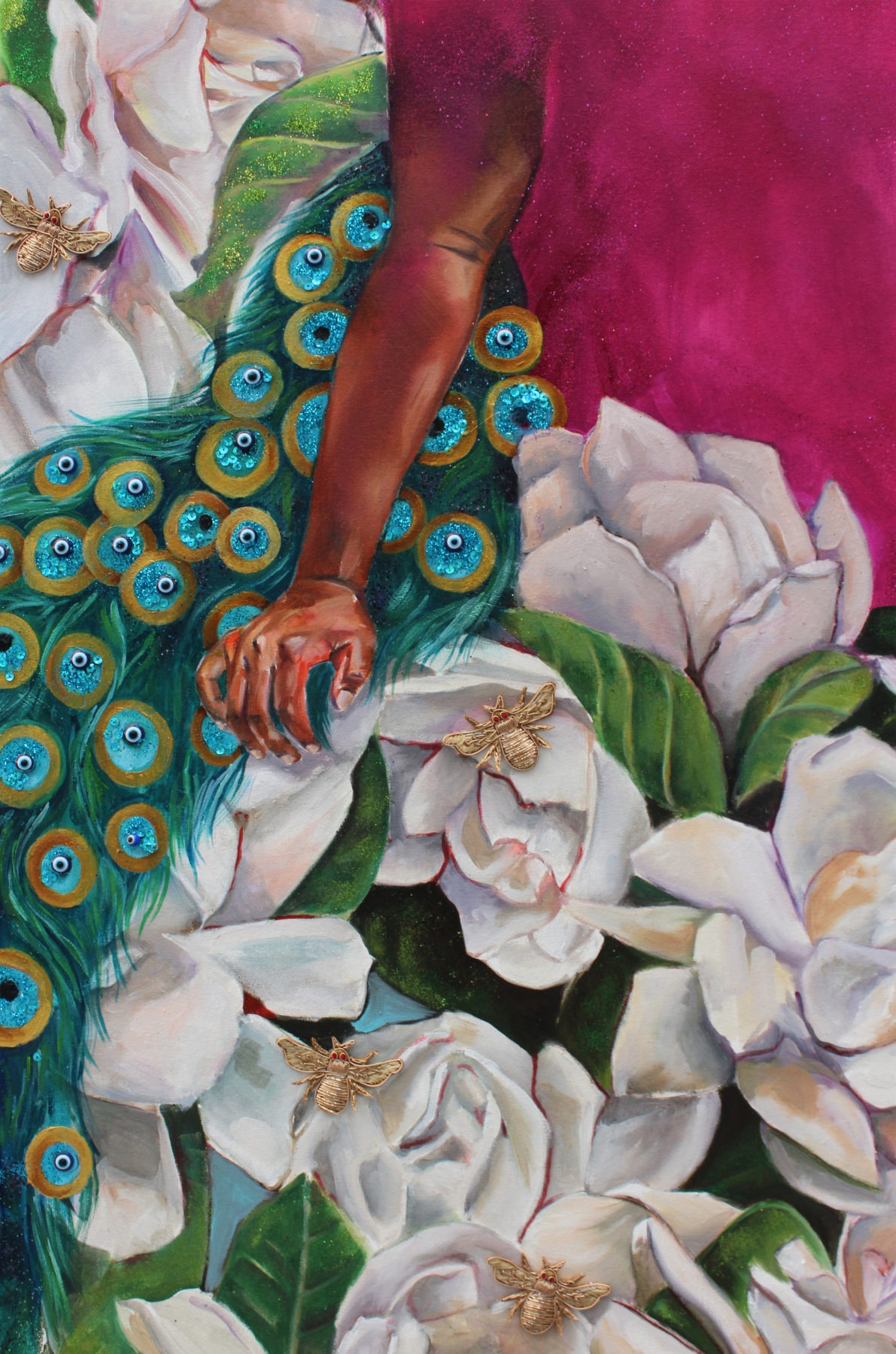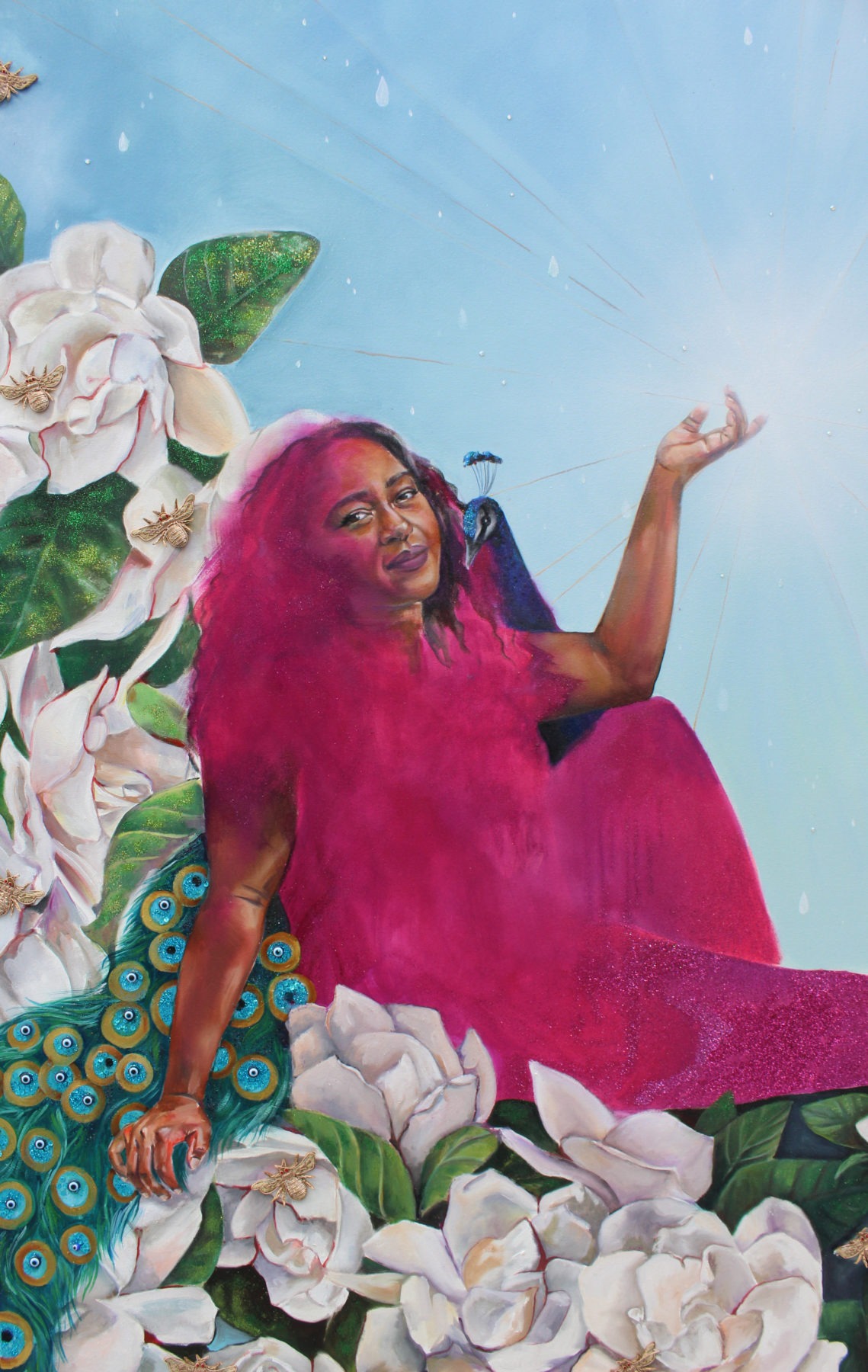
Artmaking is my greatest love.
–– Saba Taj

Top image: 'Laila in Orchids (Interstitial Lush), detail', Oil paint and glitter on canvas, 2019 ©Courtesy of the artist
In a way, the pandemic helped her in her journey to be subjective in her art. Due to many restrictions resulting from Covid -19, Taj was unable to travel for her project and paint people she met along the way. Instead, she was forced to stay and paint the people she knew. So, rather than observing as an outsider, trying to make sense of strangers, this allowed her to be an insider and show her relationship to beloved muses through the artwork. The portraits are “like love letters” where she has laid bare her feelings and emotions for the love that she shares with her community.
And she wanted to cloak this tenderness from the prying eyes of the spectators she knew would one day scrutinize their emotional display. So, she adorned them in a protective shield through layers of color and glitter, rhinestones and thread. These tedious acts of tenderness, in turn, symbolized an act of love coming from an inherited tradition of love. “The beauty of what we can create and we are creating, the communities we’re building, the transformations we must participate in, need to be celebrated,” says Taj. “And to be able to relate to each other on that level in order to feel alive” in the midst of adversity. “Part of our survival is contingent upon recognizing and celebrating these positive aspects of life.”
Through the pandemic, however, Taj has been reflecting on who she is as an artist and whether her artmaking is true to her core. She would like to revisit artmaking from the standpoint of the student. The kind of artmaking that is not subject to the pressure of the art world to create and have it be recognized. “Artmaking is my greatest love,” says Taj. “And how do I hold on to the purest aspect of it without it being made toxic by the pressures of capitalism and how it intersects with artmaking.” She would like to reconnect with the core of her love of artmaking. To focus on grounding, exploration, curiosity, and learning, rather than producing and that outcome. She is not sure how that looks in terms of projects, but she trusts that from that space, she can create work that feeds her spirit.
_____
Caveat: This conversation has been redacted and edited for clarity from an artist interview with curator Ingrid LaFleur.



Saba Taj is a visual artist based in Durham, NC. Inspired by Islamic stories, sci-fi, and revolution, Taj’s work explores representation, the gaze and the body. Their work employs interdisciplinary practices including mixed-media drawing, painting and collage, sewing, and performance. Through these techniques, Taj seeks to celebrate subjects who are often characterized as monstrous, highlighting their hybridity and liminality as an embodied resistance to subjugation. Taj was the 2019-2020 post-MFA Fellow for the Documentary Diversity Project at CDS, former Executive Director of The Carrack Modern Art, Southern Constellations Fellow at Elsewhere Museum, and featured speaker at TEDxDuke in 2017.